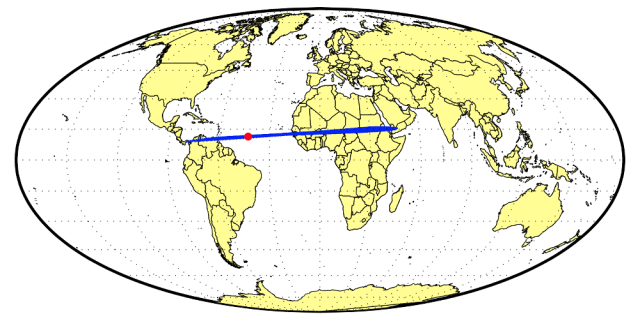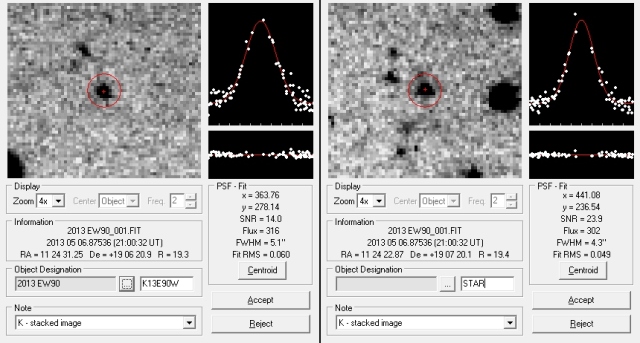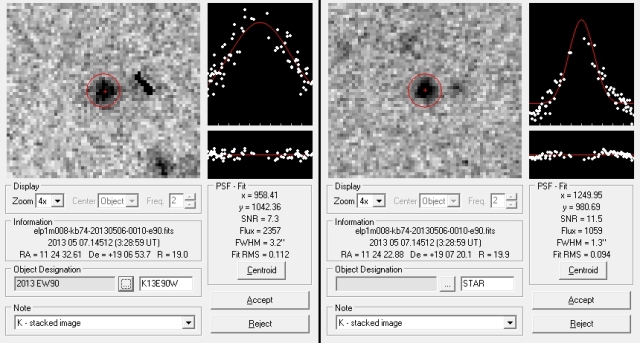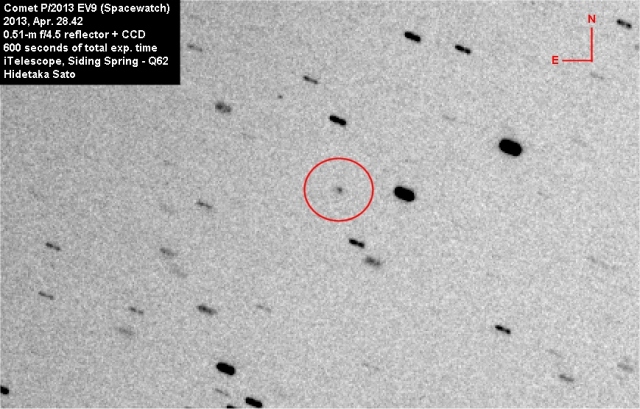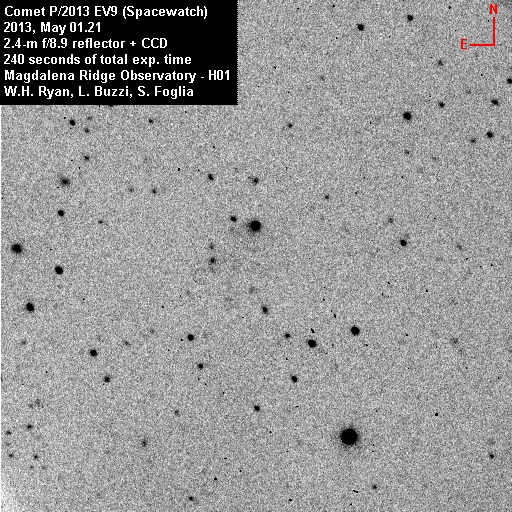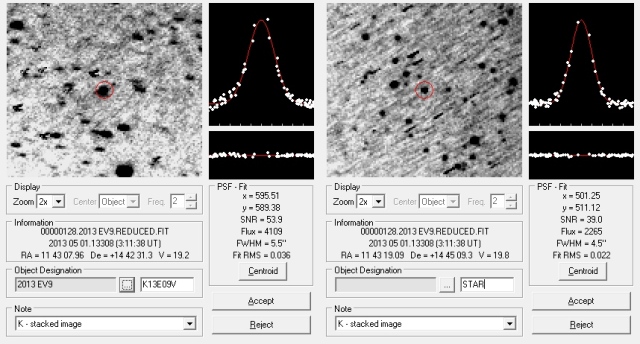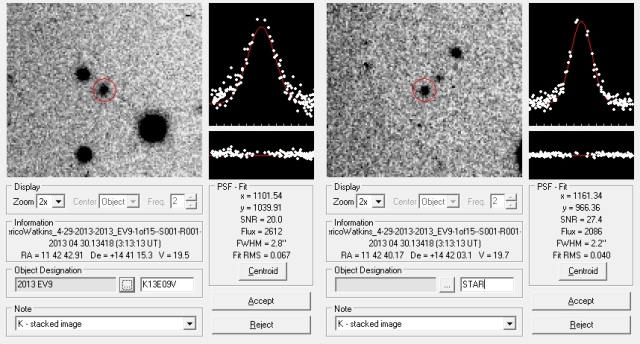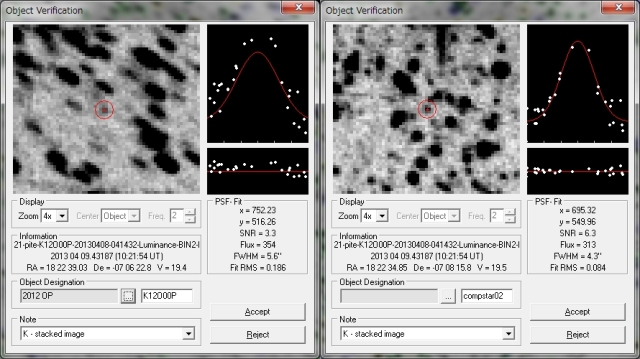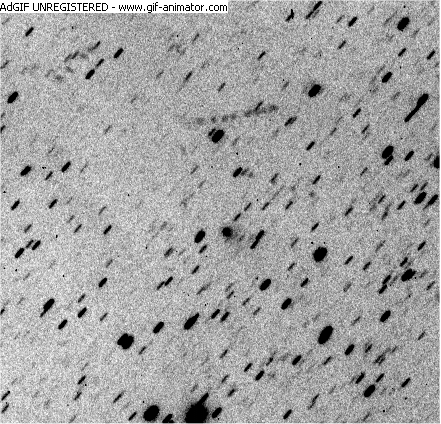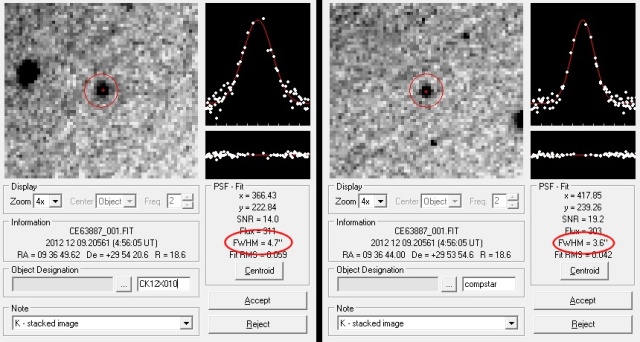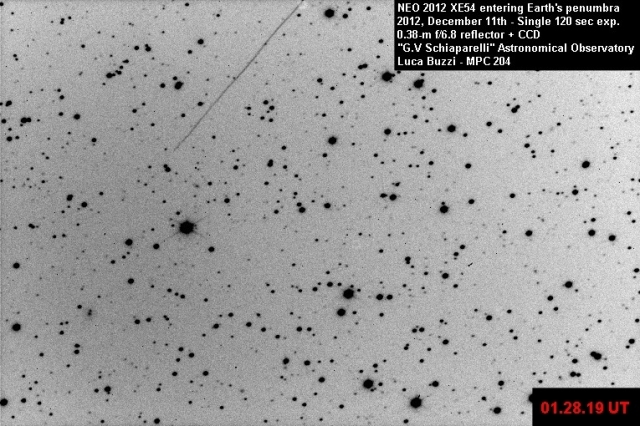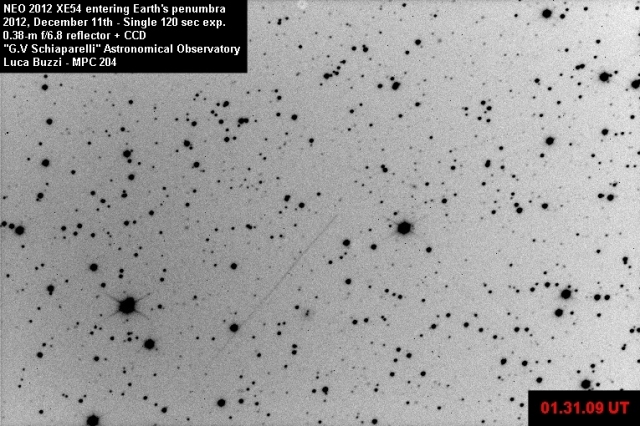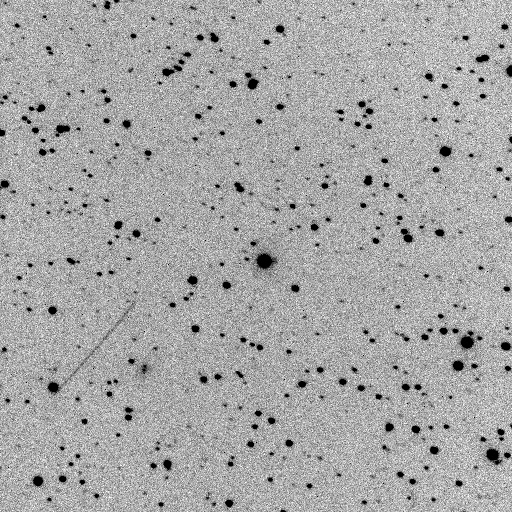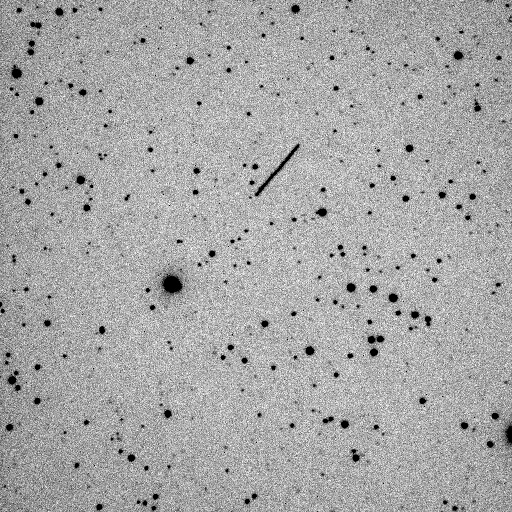UPDATE JAN. 04: http://neo.jpl.nasa.gov/news/news182a.html
Peter Brown (University of Western Ontario) and Petrus Jenniskens (SETI Institute) searched the data from low frequency infrasound observation sites of the Comprehensive Nuclear-Test-Ban Treaty Organization. They found weak signals from stations in Bolivia, Brazil and Bermuda that indicated that the likely impact location was indeed positioned within the predicted impact area. The location of impact, marked with a red dot in the image below, is still somewhat uncertain due to observational factors, including atmospheric effects upon the propagation of infrasound signals (low frequency sound waves due to atmospheric explosions).
This impact information is preliminary and has uncertainties of perhaps a few hundred kilometers in impact location and tens of minutes in impact time.
————————————————————————————————————–
2014 has began in a particular way: the first asteroid that received a designation this year, 2014 AA, has impacted Earth on 2014, Jan. 02.2.
On Jan. 01.26 Richard Kowalski, from Catalina Sky Survey, discovered a possible NEO with the 1.5-m f/2 telescope located on Mount Lemmon. It received the temporary designation VA9A092 and the Minor Planet Center posted it on the NEO Confirmation Page.
Below we can see the discovery animation (courtesy of CSS/NASA):

It received no other confirmations, though, and the following day (Jan. 02 @ 13.08 UT) MPEC 2014-A02 was issued, with the discovery observations, the preliminary orbit (70 minutes arc), the ephemerides and a note in the bottom of the circular:
“It is virtually certain that 2014 AA hit the Earth’s atmosphere on 2014 Jan. 2.2 +/- 0.4, as demonstrated by independent calculations by Bill Gray, the MPC and Steve Chesley (JPL). According to Chesley, the impact locations are widely distributed, most likely falling on an arc extending from Central America to East Africa, with a best-fit location just off the coast of West Africa on Jan. 2.10. 2014 AA was unlikely to have survived atmospheric entry intact, as it was comparable in size to 2008 TC3, the only other example of an impacting object observed prior to atmospheric entry.”
Bill Gray provided through MPML two maps of the possible impact region:
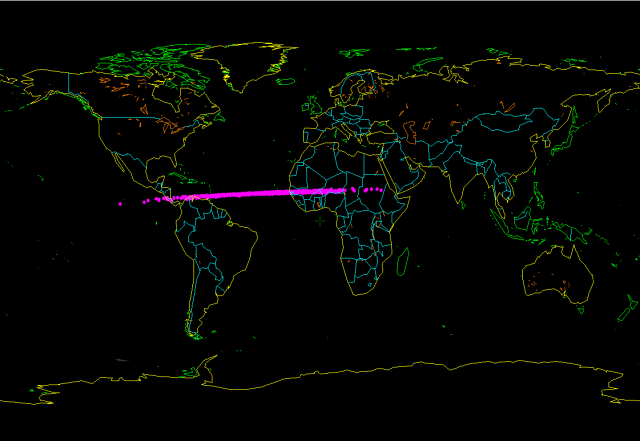
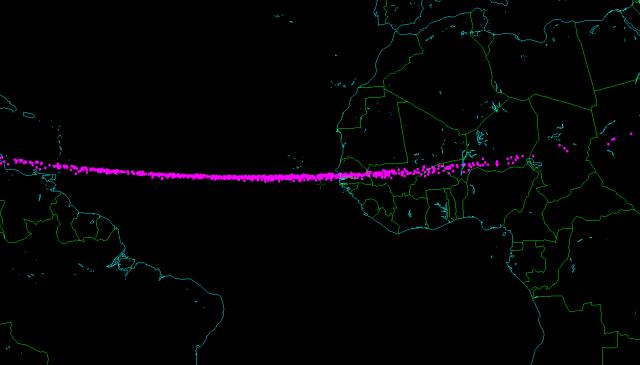
Then Pasquale Tricarico, Senior Scientist at the Planetary Science Institute in Tucson, published an animation showing the Earth as observed from the asteroid using the nominal orbit solution. The asteroid approaches the Earth from the night side, and enters Earth’s shadow cone at approximately 01:45 UT of January 2, approximately 40 minutes before entering the Earth’s atmosphere:
It is worthy to note that Richard Kowalski, with the same telescope, already discovered the 3-4 meter asteroid 2008 TC3, which impacted the Earth on 2008, Oct. 7 in a desertic region in Sudan.

